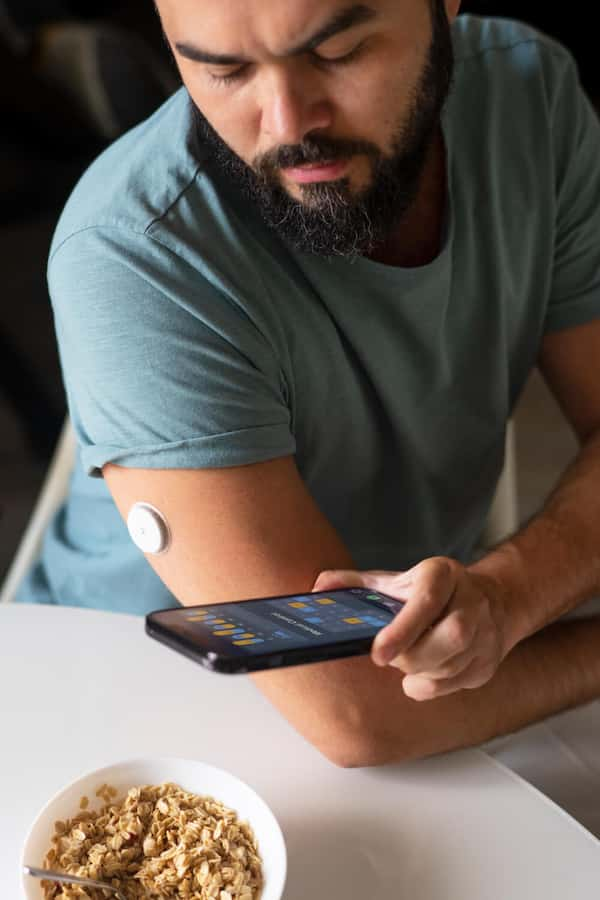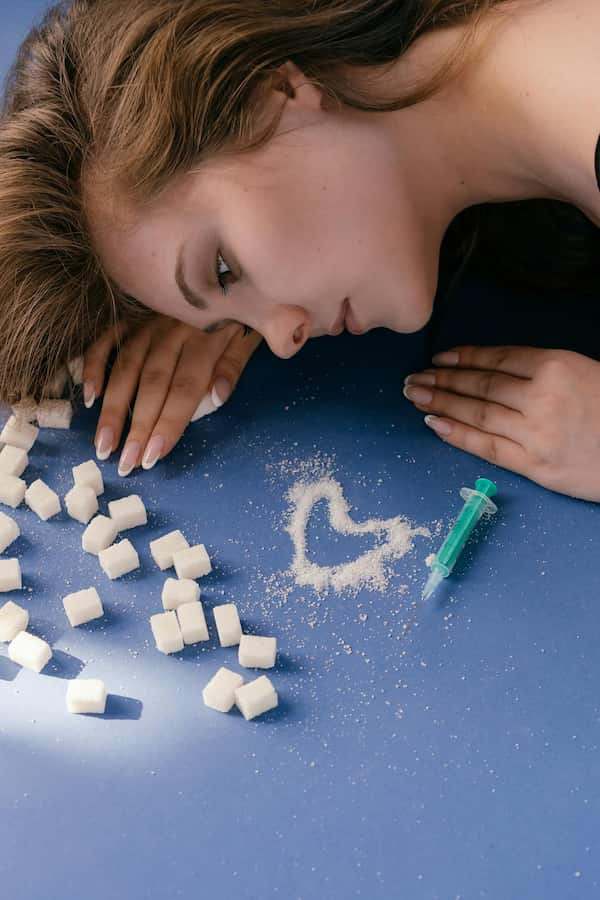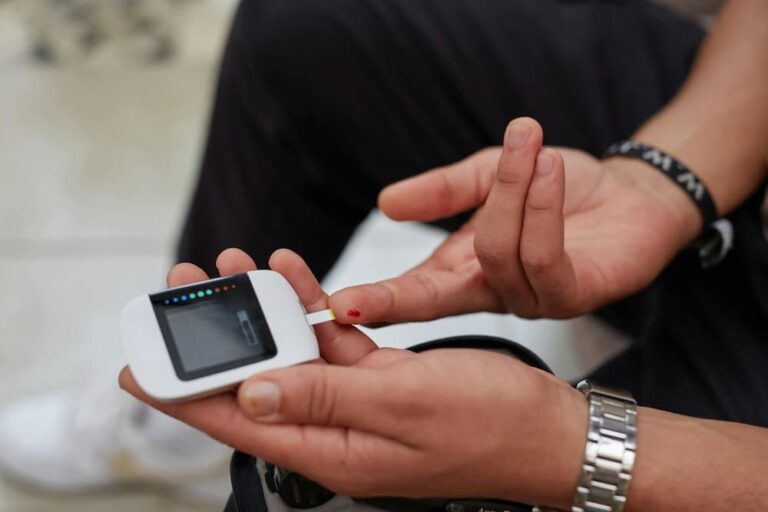Living with undiagnosed Type 1 Diabetes (T1D) isn’t like seeing a slow, blinking warning light in your car. It’s like the siren is already blaring, the car is pulling over to the side of the road, and you’re left wondering, “What on earth just happened?”
Unlike its more common cousin, Type 2, the onset of Type 1 Diabetes is often sudden, dramatic, and confusing. One week you (or your child) are perfectly fine, and the next, your world is turned upside down. The symptoms aren’t just subtle annoyances; they are urgent signals from a body in crisis.
If you’re here, frantically Googling symptoms because something feels terribly off, take a deep breath. You’re in the right place. We’re going to break down the classic signs of Type 1 Diabetes—what they are, what they actually feel like, and why they happen. This isn’t just a list; it’s a guide to understanding your body’s loud and clear call for help.
🚨 The Classic Signs: Understanding the “4 Ts” of Type 1 Diabetes Symptoms
In the T1D community, we often refer to the main symptoms as the “4 Ts.” They are the most common and noticeable red flags that your body’s insulin production has gone offline.
- What It Actually Feels Like: You’re suddenly best friends with every bathroom you pass. You’re waking up multiple times a night to pee, something you never did before. If it’s your child, they might start having accidents or bedwetting again after being dry for years. It feels relentless and frustrating.
- The Science Behind It (The “Why”): In a healthy body, insulin acts as a key, letting glucose (sugar) from your blood into your cells for energy. Without insulin, that glucose is locked out and builds up in your bloodstream. Your kidneys, being the diligent organs they are, go into overdrive trying to filter out this excess sugar. To do this, they pull extra water from your body to flush the sugar out, leading to a full bladder, over and over again.
- What It Actually Feels Like: This isn’t your average “I should drink more water” thirst. This is a desperate, bone-dry thirst that no amount of liquid seems to fix. You can chug an entire bottle of water and feel just as parched two minutes later. It feels like you’re a human desert.
- The Science Behind It (The “Why”): This is the direct consequence of the first “T.” Your body is losing so much fluid from constant urination that it becomes severely dehydrated. It sends desperate signals to your brain screaming, “WE NEED WATER, NOW!” creating that intense, unquenchable thirst.
- What It Actually Feels Like: This isn’t just “I need a coffee” tired. This is a profound, full-body exhaustion that feels like you’re walking through wet cement. You have no energy for school, work, or hobbies. Simple tasks feel monumental. You sleep for 10 hours and wake up feeling like you haven’t slept at all.
- The Science Behind It (The “Why”): This is the core of the problem. Your cells are literally starving. Even though your blood is full of sugar (energy), the lack of insulin means your cells can’t access it. Your body is running on empty, no matter how much you eat.
- What It Actually Feels Like: You’re dropping pounds rapidly without changing your diet or exercise routine. While it might sound appealing on the surface, it feels unsettling and looks unhealthy. Your clothes are suddenly baggy, and your face might look gaunt.
- The Science Behind It (The “Why”): Since your cells can’t get energy from sugar, your desperate body starts breaking down fat and muscle tissue for fuel. It’s essentially cannibalizing itself to survive, leading to rapid and dangerous weight loss. This is a major red flag.
⚠️ When Symptoms Escalate: Understanding DKA (Diabetic Ketoacidosis)
If the “4 Ts” are the warning sirens, DKA is the full-blown medical emergency. Many people, especially children, are diagnosed with Type 1 Diabetes only when they are already in DKA. Recognizing these signs is critical.
DKA happens when the body, starved for sugar, breaks down fat so rapidly that it produces a flood of acidic chemicals called ketones. When ketones build up, they turn the blood acidic, which is life-threatening.
The symptoms of DKA are more severe and include the “4 Ts” PLUS:
- Stomach Pain, Nausea, and Vomiting: Your body is trying to get rid of the excess acid.
- Fruity-Smelling Breath: This is a hallmark sign caused by ketones building up. It’s often compared to the smell of nail polish remover or overripe fruit.
- Rapid, Deep Breathing (Kussmaul Breathing): The body is desperately trying to “blow off” the excess acid by exhaling carbon dioxide.
- Confusion, Drowsiness, and Lethargy: As the brain is affected by the acidic blood, the person becomes disoriented and extremely sleepy. This can lead to a coma if not treated.
THIS IS A MEDICAL EMERGENCY. If you or someone you know is experiencing these symptoms, especially fruity breath and vomiting, go to the nearest emergency room immediately. Do not wait for a doctor’s appointment.
Beyond the Basics: Other Sneaky Type 1 Diabetes Symptoms
While the “4 Ts” are the headliners, other symptoms can show up too:
- Blurred Vision: High blood sugar can pull fluid from the lenses of your eyes, causing them to swell and change shape. This can make your vision blurry and inconsistent.
- Recurring Infections: High sugar levels create a welcoming environment for bacteria and yeast. This can lead to frequent urinary tract infections (UTIs), thrush, or other skin infections.
- Slow-Healing Sores or Cuts: High blood sugar impairs your body’s ability to heal by damaging nerves and affecting circulation.
- Extreme Mood Swings and Irritability: When your body and brain are starved for energy and dealing with hormonal chaos, it’s no surprise that your mood can swing from happy to intensely irritable in a flash.
The Honeymoon Phase: A Confusing Twist in the Tale
Just to make things more confusing, some people experience a “honeymoon phase” shortly after diagnosis and starting insulin. This is a temporary period where the body’s few remaining beta cells rally and start producing some insulin again.
During this phase, blood sugars can become much easier to manage, and insulin needs can drop dramatically. It can feel like you’re “cured,” but sadly, it’s temporary. This phase can last for weeks, months, or even over a year, but eventually, the autoimmune attack completes its course, and the person becomes fully dependent on external insulin again.
🧭 Final Thoughts: Your Next Move is Your Most Powerful One
Recognizing these Type 1 Diabetes symptoms is the first, most crucial step. It’s not about panic; it’s about empowerment. These signs are not your body failing you; they are your body communicating with you in the only way it knows how.
Ignoring them is not an option. Your next move is to seek clarity.
- Don’t Wait. See a Doctor. Make an appointment with a doctor or go to an urgent care clinic as soon as possible.
- Be Clear About Your Symptoms. List everything you’ve been experiencing—the thirst, the exhaustion, the weight loss. Be specific.
- Get Tested. The doctor will likely order simple blood tests, like a random blood glucose test and an A1C test, to see what’s happening. If T1D is suspected, they may also test for autoantibodies.
Your story doesn’t have to start with a trip to the ER in a state of DKA. By listening to your body now, you are taking control. You are choosing knowledge over fear. And that is the most powerful first step on this path.
⚠️ Reminder: I am not a medical professional. This content is based on my own lived experience and extensive research as a person with Type 1 Diabetes. It is for informational purposes only and should not replace professional medical advice. Always consult your doctor for diagnosis and treatment.











